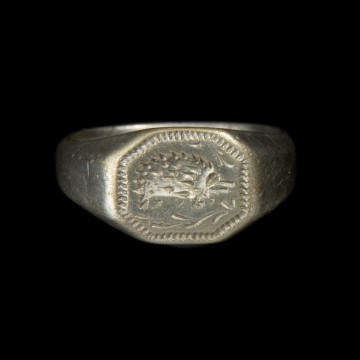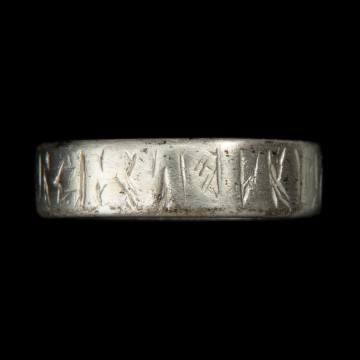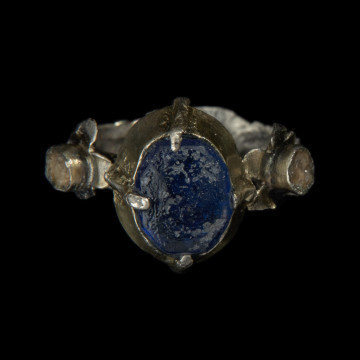
Signet ring with hedgehog
przełom XIV i XV wieku
National Museum in Szczecin
Part of the collection: Middle Ages
An amber finger-ring, discovered during excavations in 1960 in an early-medieval stronghold in Kamień Pomorski, was carved with a knife from a lump of orange, milky transparent amber. The outer surface is smoothed, but still shows signs of machining. The inside is finished with even less attention to detail. The central part of the ring was formed into a small disc. It is most likely a local product, made in a local workshop. Amber is an organic material, which formed out of fossilised resin of coniferous trees, and it comes in nearly sixty varieties. In the early Middle Ages, Western Pomerania used the Baltic amber, also referred to as succinite, which is light and, unlike other varieties, contains a lot of amber acid valued for its medicinal properties. It is also characterised by a wide range of colours – with the most popular orange, through yellow and red, to greenish and bluish hues. The easiest way to acquire amber was to collect smaller and bigger lumps, which washed up on the beaches during storms. Traditional methods also included scooping – disturbing the seabed with long sticks, which released the amber from under the sand. Light lumps of amber then floated to the surface, where they could be picked up with baskets.
Ewa Górkiewicz-Bucka
Author / creator
Dimensions
cały obiekt: height: 2.4 cm, width: 2.4 cm
Object type
jewellery, small ring
Technique
scraping, smoothing, sawing, cutting
Material
amber
Origin / acquisition method
field research
Creation time / dating
Creation / finding place
Owner
Muzeum Narodowe w Szczecinie
Identification number
Location / status

przełom XIV i XV wieku
National Museum in Szczecin

przełom XIV i XV wieku
National Museum in Szczecin

National Museum in Szczecin
DISCOVER this TOPIC
Museum of King Jan III's Palace at Wilanów
DISCOVER this PATH
Educational path